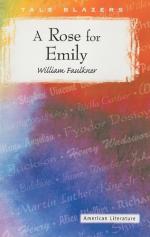|
This section contains 1,893 words (approx. 7 pages at 300 words per page) |

|
Uses of the Conventions of the Gothic Story in "The Yellow Wallpaper" and "A Rose for Emily"
Summary: Compares the ways that Charlotte Perkins Gilman and William Faulkner use the conventions of the Gothic Horror story in "The Yellow Wallpaper" and "A Rose for Emily" respectively.
In the eighteenth century, Gothic story was an extremely popular form of literature, and it has been a major genre since then. "The Yellow Wallpaper" by Charlotte Perkins Gilman and "A Rose for Emily" by William Faulkner are both Gothic horror stories consisting madness and suspense. The Gothic horror story carries particular conventions in its setting, theme, point of view, and characterisation. Both Gilman and Faulkner follow the conventions of the Gothic horror story to create feelings of gloom, mystery, and suspense that are essential for compelling stories.
Goth is a term that originally referred to a northern Germanic tribe who ransacked southern Europe in the fourth century A.D. Because the Goth was associated with the fall of Rome and its classical culture, the term Gothic was applied with a negative meaning of medieval or barbaric. In the eighteenth century, Gothic novels drew upon the conventions of...
|
This section contains 1,893 words (approx. 7 pages at 300 words per page) |

|


